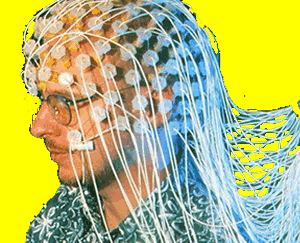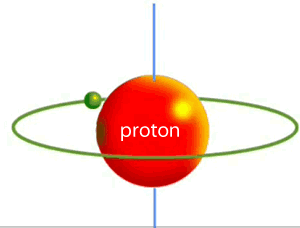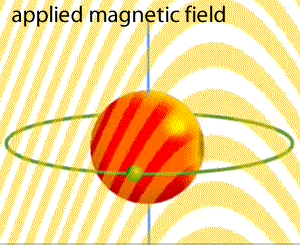Magicians have been testing and exploiting the limits of cognition and attention for hundreds of years. Only now are neuroscientists just beginning to use the magician's tricks to analyse brain behaviour.
Neuroscientists are studying magic tricks so that they can be put to use in experimental studies that probe aspects of consciousness not necessarily grounded, in what we know currently as, sensory reality.
In order to study how the brain behaves during certain magic tricks neuroscientists must probe deep into the brain without surgery and study what parts are involved and how they interact with other areas to produce the cognitive illusion. Studies of how attention and awareness are manipulated by magicians to create an illusion can lead to better diagnosis and treatment of patients suffering cognitive deficits such as ADHD (attention-deficit-hyperactivity-disorder) and Alzheimer's disease.
An electroencephalogram (EEG) is a picture of the electrical activity of the brain. It is made by placing small terminals which conduct an electrical current, electrodes, on the subject's scalp and connecting the electrode wires to a machine known as an electroencephalograph. The electroencephalograph then records the patterns of electric impulses of the brain.
EEGs are used to diagnose epilepsy (a disorder marked by severe seizures or convulsions), brain tumors, strokes, and other neurological (nervous system) conditions. These conditions are characterized by distinctive, abnormal patterns of brain waves. EEGs are also used in investigating psychiatric disorders, such as schizophrenia (a psychiatric condition in which a person's sense of reality is severely distorted). In addition, EEGs help in defining brain death (the measurable end of brain activity). This diagnosis is necessary before the donation of organs for surgical transplants.

MRI takes advantage of the hydrogen atom's strong magnetic moment, which means that in a magnetic field, they line up in the direction of the field. This magnetic moment comes about due to the rotation of the proton as shown on the right.

MRI actually measures the density of hydrogen atoms and therefore water density in the body and from this we can build a 3D or 2D picture of the body. It does this by placing the patient in a tuned magnetic field which causes the hydrogen atoms to align themselves with this field. The machine is big and bulky with strong magnets producing powerful magnetic fields.
The hydrogen proton is in a very unstable state and flips straight back to its preferred position the moment the magnetic field is turned off. In flipping back to its original position the proton releases energy which is then measured and converted into images.

What dose an MRI machine measure?